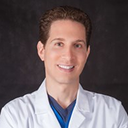Thank you for your question. I understand you had too much Restylane placed in one of your tear troughs, however you don’t want to get hyaluronidase, as you’d rather see if you can massage it to get the material to absorb more quickly. You also state that you may add more Restylane in certain areas to further improve the cosmetic result.I can certainly give you some guidance. I’m a Board-certified cosmetic surgeon and Fellowship-trained oculofacial plastic and reconstructive surgeon, practicing in Manhattan and Long Island for over 20 years. Performing eye rejuvenation procedures with the help of fillers is something I do daily in my practice.When you correct any area with fillers or injectables, you can expect a certain amount of swelling to occur due to the natural reaction of the skin to the injection, and due to the swelling of the material itself from the absorption of water, so the timing of the evaluation does make a difference. That said, I am curious how long since your injection was this photo taken. I usually tell my patients to come back after two weeks because by this time, things would have settled and balanced out to a level where I think they are going to be stable enough for certain amount of time. Fillers have different levels of viscosity and longevity based on the cross linking of hyaluronic acid. Restylane is one of the softest hyaluronic acid fillers, but in terms of its absorption rate in the tear trough area, there is a certain amount of unpredictability there depending on how deep it’s placed. In scenarios wherein Restylane is placed underneath the muscle, I have actually seen that Restylane can be present in the area for years. This is because the body can sometimes form some type of capsule around the foreign material, which allows it to last longer. So, there is no direct answer with regard to how to make the material absorb faster, but you can try to sculpt or massage it the area. I do not, however, think that there is any merit in being too overly aggressive in doing this.In terms of the areas of volume that may benefit, when I treat people with concerns of under eye hollows, I don’t consider the tear trough or the eyelid separately — I look at the eyelid and cheek as one aesthetic unit. It is unusual for me to only fill the tear trough, but also fill out the area right in the area of the cheek junction called the V deformity. When you only fill out the tear trough area, particularly in someone with relatively shallow cheekbones, it almost creates the illusion of a ledge or a shelf. Many of my female patients aged 40 – 45 years old, who are also very fit and have relatively thin faces, actually benefit from cheek lifting with help from a filler like Juvederm placed in the deeper, structural levels of the face.I think there is an art to using injectables and that there are really a lot of ways to look at certain areas. Some physicians are more straightforward than others — if you come with a tear trough complaints, they will fill the tear trough. If you come with nasolabial fold complaints, they will fill the nasolabial folds. I, on the other hand, prefer to look at it from a more global perspective. Loss of volume, bone, muscle, and fat can actually be more artfully managed by means of structural volumizing, which restores the definition of the cheeks, jaw and chin. When patients see the restoration of the cheekbones and the jaw angle, they don’t even think of the nasolabial folds because the nasolabial folds were not the issue in the first place, but the volume surrounding it. Ultimately, I think you are on the right track — it’s not just the tear trough, it’s also the cheek with the tear trough and under eye area. I suggest that you communicate with your doctor and discuss what your options are in terms of a realistic potential for improvement. You can wait it out and let it absorb and settle, or you could intervene with hyaluronidase.I hope that was helpful and I wish you the best of luck!This personalized video answer to your question is posted on RealSelf and on YouTube. To provide you with a personal and expert response, we use the image(s) you submitted on RealSelf in the video, but with respect to your privacy, we only show the body feature in question so you are not personally identifiable. If you prefer not to have your video question visible on YouTube, please contact us.





